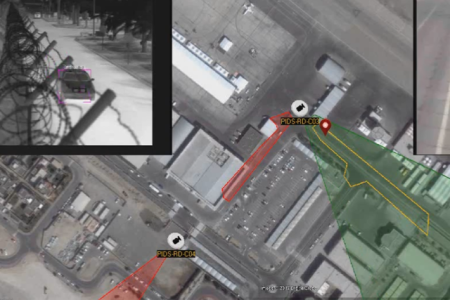Next generation of Intelligent Video Analytics driven by joined-up thinking
 Security News Desk sits down with Dr Boghos Boghossian – Technical Director at UK-headquartered Ipsotek – to discover how new advances in Video Analytics are helping to drive this technology to the next level.
Security News Desk sits down with Dr Boghos Boghossian – Technical Director at UK-headquartered Ipsotek – to discover how new advances in Video Analytics are helping to drive this technology to the next level.
There is no getting away from the fact that Video Analytics has had a chequered history. A decade ago the tendency of some vendors to over promise and under deliver – with solutions appearing on the market that were frankly not up to the job – led, understandably, to a degree of disillusionment. Many early adopters found, to their cost, that the on-the-ground reality of the technology failed to live up to the hype and, as a result, were reluctant to commit to future deployments.
Video Analytics as an Essential Component
Fast forward to today and, thankfully, things have moved on for the better, as new fit-for-purpose and advanced solutions have started to prove their worth. Certainly the sort of Video Analytics now being offered by Ipsotek is a world away from the solutions that other, less capable, providers have been struggling to provide over the last ten years or so. Video Analytics has become essential technology with many benefits in security, safety, operational and business intelligence applications.
From talking to Dr Boghossian, whose team is at the forefront of the research and development for a new generation of Video Analytics, not only is there a real buzz in the air about the power of the increasingly sophisticated video analysis techniques that are being applied, but crucially, it becomes clear that the products in question are able to perform consistently and at a very high level in even the most challenging of security critical environments.
According to Dr Boghossian, Ipsotek’s industry-leading solutions are much in demand to deliver enhanced situational awareness from real-time ‘live’ video streams as well as for post-event forensic analysis. To put the reach of Ipsotek’s offerings into perspective, at the latest count its Video Analytics had been rolled out in over 500 installations worldwide, with critical infrastructure like airports being a particularly buoyant sector for the business where it has secured 26 large airports globally.
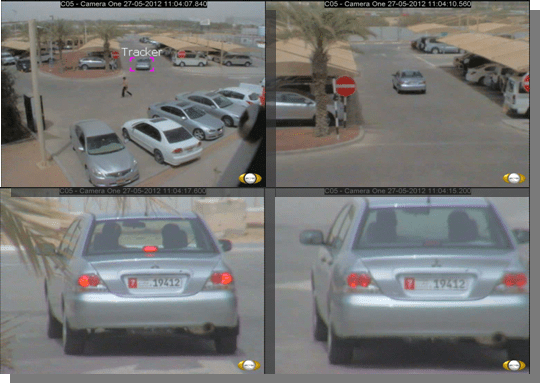
Behaviour Recognition vs Event Detection
Drilling down to the specifics of how Video Analytics is adding value from both a security and wider operational perspective, Dr Boghossian is keen to tell us more about the patented ‘scenario-based rule approach’ that Ipsotek has developed, which is strengthened by the application of advanced conceptual logic and cognitive analysis:
“The key differentiator here is that while there are many Video Analytics products looking at event detection, we actually focus on behaviour recognition through the identification of multiple events that may be occurring concurrently or in a certain sequence. This route allows us to better understand what’s happening in a scene behaviour-wise, and only then do we trigger the desired alert.”
Dr Boghossian asserts that this is a smarter approach to take rather than simply handing over multiple alerts to an operator and leaving it to them to sift through all of them to decide which, if any, are relevant. Dr Boghossian further adds “the hybrid approach to video analytics adopted by Ipsotek fuses the scenario based rule engine with a cognitive engine that performs supervised learning based on operator feedback to further improve the performance of the complete solution.”
To illustrate his point, Dr Boghossian moves on to cite the common scenario of an abandoned package: “There is a lot of talk about abandoned package detection and Video Analytics. In our case we actually do, of course, detect the bag when it is left, or if we are detecting an abandoned vehicle we detect the vehicle when it stops, but we don’t usually raise that event – we wait to see what happens next. If the person walks away from the bag, or if the person gets out of the vehicle and walks away, that is when we trigger at a second level to indicate that this object or that vehicle is actually abandoned. “In our view this is essential, as otherwise every time a car or an object is on the floor and is stationary for a few seconds you will get an alarm.” Dr Boghossian goes on to say that, even with this simple example, it is possible to illustrate the extra level of intelligence that Ipsotek’s approach employs: “Scenarios can, of course, be a lot more complex. To an extent, the Ipsotek Scenario-Rule solution defines a language through which the operator would explain to the system the exact behaviour of interest.” This language further extends to fuse inputs from other systems like Access Control, Biometrics and PIDS to provide advanced multi sensor solutions like two factor authentication and double-knock perimeter protection.
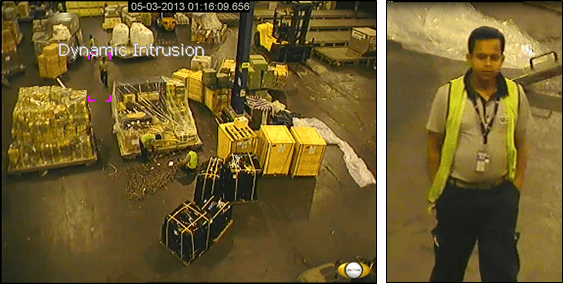
Addressing real world challenges with Automatic Configuration
Dr Boghossian also explains that the scenario-based rule engine developed by Ipsotek is an extremely capable method of solving the complexity of Video Analytics. He points out that it is even possible to set-up ‘dynamic zones’ as in many situations the reality is that it is impossible to define a specific analytics zone ahead of time, and therefore the analytics system should be able to create the zones dynamically as a situation develops in real-time:
“An example of this is what we do for airport security in the cargo areas. You have got the situation where the cargo gets scanned and X-rayed and is then prepared to be loaded onto a plane. At that point there is obviously a high security threat if an item is added to that cargo.”
Dr Boghossian points out that the area where the cargo is parked for a period of time before it is loaded onto the plane can vary in the camera field of view. “If the whole area is just defined as an intrusion detection zone, to trigger an alarm if someone appears anywhere, many false alarms will be generated because it is an active area.”
So what is Ipsotek’s answer to this dilemma of too many nuisance alarms? Well, Dr Boghossian explains that the Ipsotek Video Analytics system could automatically define detection zones by referencing the detected cargo containers (instead of the ground area) when they are parked and left for a pre-defined period of a time, this will make these zones become active zones for intrusion detection: “these zones get defined dynamically after the first behaviour has occurred, which is that the cargo containers have been left there, and then they become ‘armed’ for intercepting any intrusion in those areas.”
The Holy Grail of Video Analytics
Another instance, again involving airports, where the ability to call on a scenario-based rule engine has solved an operational dilemma, relates to an anti-backtrack solution so passengers who have gone through a set of doors to landside cannot go back to airside: “Back in 2012 we worked with a local partner to develop a solution for this where we automated the whole process. The solution is based on deploying an overhead camera to simply detect anyone trying to backtrack – walking in the reverse direction – and contain them by forcing the closure of doors to stop them getting to airside. This is key when the security guard is no longer there.” Dr Boghossian explains further by saying: “The first set of doors detect the person trying to enter and the second set of doors will automatically close to stop them from entering airside. This is another unique aspect to our product set – in that we can introduce third party inputs and outputs to our scenario-based solutions.”
However, Dr Boghossian highlighted that the real challenge in this application was the requirement to achieve 100 per cent detection rate while maintaining an extremely low false alarm rate: “If the system misses one individual then that would be a breach to airport security, but at the same time, every false alarm will obstruct passengers, restrict flow and cause congestion.” The deployment of such a Video Analytics Solution required extensive testing and sign off from both the Department Of Transport and the Airport Authority, so confirming the achievement of the holy grail for Video Analytics – a 100 per cent detection rate combined with an extremely low level of false alarms.
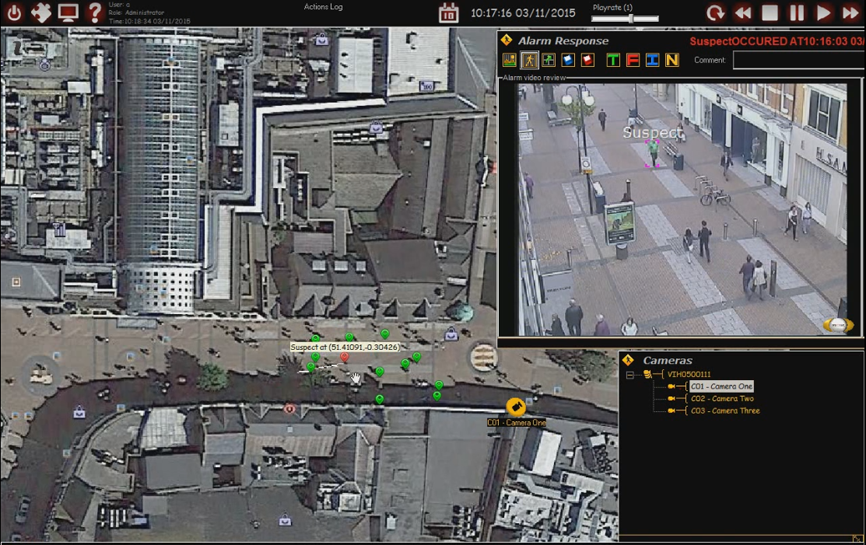
Bridging between the Cyber and Physical Worlds
Moving on to Dr Boghossian’s thoughts on Ipsotek’s Tag and Track – another impressive component of the company’s core capability – that, as the name suggests, can track multiple individuals inside a multi-camera network in real time, or can be employed retrospectively to understand the movements of ‘tagged’ individuals in forensic investigations, he said: “We started development in 2010 and have now successfully patented Tag and Track as a part of our bigger suite of solutions. Our analytics engine generates meta-data information for all tracked objects in a scene – this could be people, vehicles or other objects – and then they are constantly tracked.”
For example, once an individual has been tagged, the system will automatically follow them throughout the CCTV network both going forward (by continuing to track them), as well as backward by displaying the path that the individual took leading up to the point of being tagged. If the person enters an area where there is a gap in the coverage, the predictive algorithm is used to suggest the most probable location where the person will reappear. The benefit of this solution is that operators gain situational awareness – an ability to track multiple targets and quickly know where they came from – and to answer the questions of how did they interact; who were they with; are there any other individuals who are also of interest. Furthermore, the time and location information that is provided by Tag and Track can be correlated with other sources of cyber information to create an identity cluster for the individual. This fusion of virtual and physical information greatly enhances the ability to investigate and control a situation.
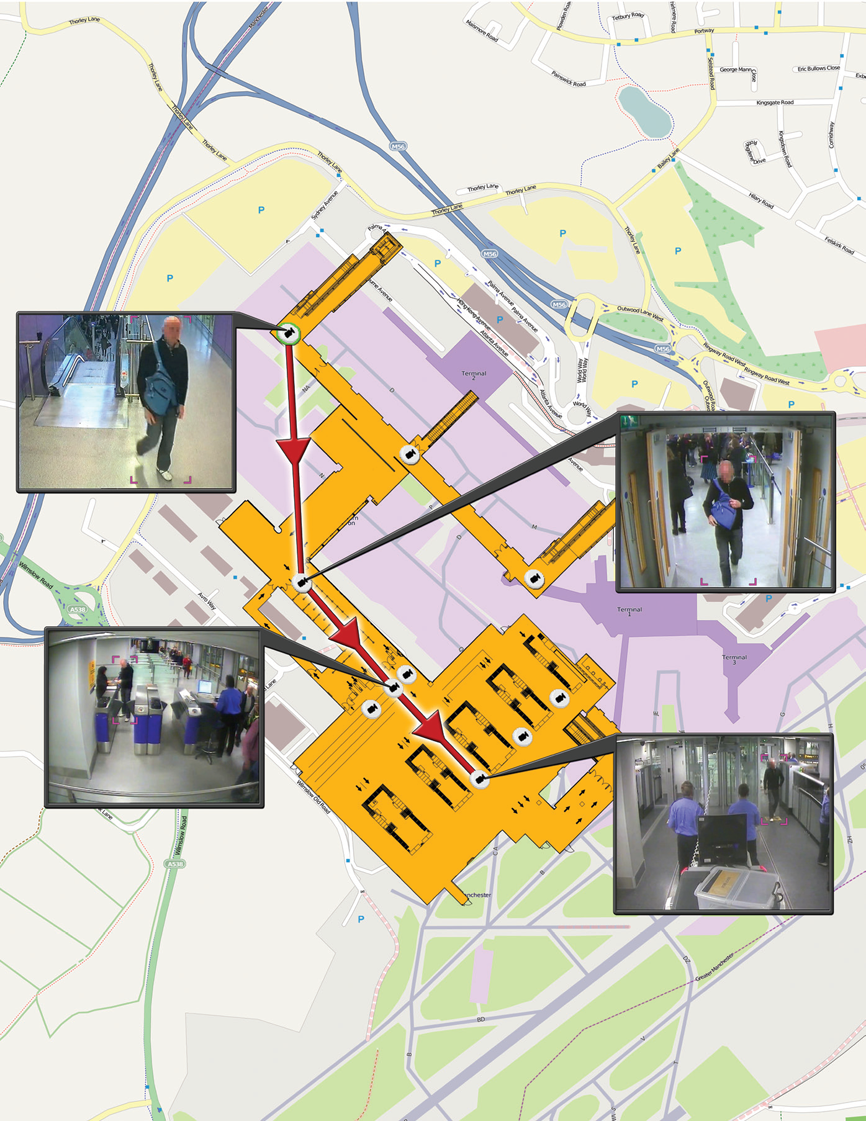
Fusion of Video Analytics and Biometrics
Dr Boghossian explains that, where necessary, the overall Video Analytics solution can be enhanced by gathering additional biometric data that is unique to each individual. An example of this would be the use of Facial Recognition (which Ipsotek offers as part of its portfolio of solutions) and then to feed this constant stream of biometric data into specific databases: “We can design the system so that it will capture and store almost all of the faces that have visited the customer facility, and this allows a situation where the relevant stakeholder can say – ‘we’ve just become aware of a particular person who is perceived as a threat, and we want to know if they have been in our facility, when that was, where they went, who with, and what were they doing’. The image of this new person of interest is scanned into the system, which then searches through all the faces that have been previously seen in the facility, finding any matches, and displaying the face-shots of the instances of those matches with the associated overview video (before and after their face was captured) along with the timestamps and location data”. The use of the overview cameras provides operators with the ability to see the contextual details and other crucial information, such as what the person of interest is currently wearing and who they are with.
Adding an extra dimension for Enhanced Situational Awareness
We round off our discussion of all things Video Analytics, by delving into the world of ‘3D analytics’ which is transforming how incidents are handled. Dr Boghossian says that essentially this is all about bridging the gap between a CCTV camera view being 2D and the physical world being 3D: “When you are analysing footage from a camera it is a flat two-dimensional view.” The consequence of this is that, for a long time, analytics was all about raising events based on those 2D camera views: “If you raised an intrusion alert you would put a bounding-box onto the 2D image, but that was all the operator got.”
Dr Boghossian reports that for some time now Ipsotek has moved beyond such limitations to detect and highlight an object of interest’s actual location in three dimensions:
“Where is that object in the real world? The simplest way to define this is to geotag that object by performing 3D modelling of the camera scene. Having achieved that, you can easily then find out how far and where that object is in reference to the camera. The system knows where the camera is and where it is pointing, so from there you can calculate the GPS coordinates of every object that you are tracking in the camera view. This means that instead of just showing the operator a flat image with some bounding boxes, it is now possible to also display the location of the object that triggered the alert onto a map, describe their direction and speed of travel and more importantly their distance from sensitive assets.”
Dr Boghossian further describes the effectiveness of this technology in that it automatically controls the nearby Pan Tilt Zoom cameras to zoom on and track the detected target to further assist the operators and provide more control of the unfolding incident.
Dr Boghossian summarised our conversation by saying: “All of our recent technological advances have combined to create a ‘next-generation’ of Video Analytics that enables the end customer to achieve real situational awareness, and making it much more likely that any resulting response is effective.”
Be sure to visit Ipsotek on stand H26 (Hall S1) and stand C26 (Hall SA) at Intersec Expo, Dubai, 22nd – 24th January 2017.
[su_button url=”http://www.ipsotek.com/” target=”blank” style=”flat” background=”#df2027″ color=”#ffffff” size=”10″ radius=”20″ icon=”icon: arrow-circle-right”]For more information on Ipsotek click here[/su_button]








